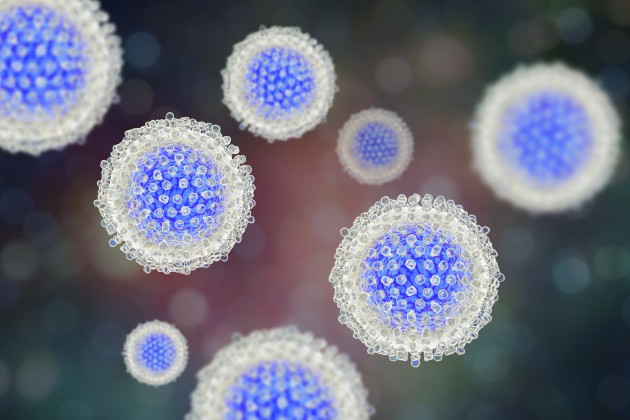Collections
-
-
-
-
Collection |
 Climate Change and Human Exposures
Climate Change and Human Exposures
Global environmental change is one of the most critical environmental health challenges of our time. Exposure science and environmental epidemiology enable understanding of the connection between changes in climate and associated human health impacts.
Image: by Marc GuitardOpen for submissions -
Collection |
 Wildfires
Wildfires
Regions around the world area experiencing frequent wildfires. In addition to direct impacts on people, wildlife and property, wildfires release significant amounts of air pollutants including particulate matter and gases.This collection presents a curated list of studies that describe modelling approaches to study wildfires and studies that quantify exposures and health effects related to wildfires.
Open for submissions -
Collection |
 PFAS – Forever Chemicals
PFAS – Forever Chemicals
Highly fluorinated chemicals, sometimes referred to as PFASs, are used in many consumer products and industrial applications because of their oil-, stain-, and water-repellent properties. Many of these chemicals are persistent and may accumulate in the body. In states including Colorado, Michigan, Pennsylvania, New York, and North Carolina, local water systems have been contaminated with PFASs, and there is a growing movement towards better regulation of these chemicals. This collection provides a glimpse of how exposure science is advancing understanding of the relationship between exposure to PFAS and human health impact, as well as enabling actions to address concerns related to PFAS.
Image: PhotoAlto/Frederic CirouOpen for submissions -
Collection |
 Indoor Air Quality and Health
Indoor Air Quality and Health
The air quality inside and around buildings impacts our health and comfort. Health effects from indoor air pollutants may be experienced soon after exposure or years later. Understanding and controlling common pollutants indoors can improve health and wellbeing.
Image: Getty Images, 2023Open for submissions -
Collection |
 Children's Health
Children's Health
Children are more vulnerable to environmental insults and injury compared to adults, and health disparities and other social determinants can influence exposure patterns. Early-life exposure to environmental chemical and pollutants can affect an individual’s health over the lifetime. In fact, children’s health is identified as a key area of focus in the field of environmental health. This collection presents a curated list of studies that highlight exposure pathways, related health effects, and impact of behavior interventions across a wide range of environmental chemicals.
Open for submissions -
Collection |
 Advancing Health Equity
Advancing Health Equity
Health equity is the state in which everyone has opportunity to attain full health potential and no one is disadvantaged from achieving this potential because of social position or any other socially defined circumstance. Currently, the burdens of disease and poor health and the benefits of well-being and good health are inequitably distributed both in the United States and on the global landscape. This Collection highlights the use of multidisciplinary approaches by exposure scientists and epidemiologist to understand the unequal distribution of environmental exposures, links to burden of disease, and connections to social-structural factors such as racism, racial segregation, and environmental/economic policies.
Open for submissions -
Collection |
 Chemicals in Products
Chemicals in Products
A large variety of chemicals are used in consumer products. Some of these chemicals, including bisphenols, phthalates, flame retardants, Per- and polyfluoroalkyl substances (PFAS), and parabens, are known to be detrimental for human health. This collection provides information on methods to collect exposure information related to consumer products, data on human exposure to chemicals found in personal products, and related health effects in different populations.
Open for submissions -
Collection |
 Healthy Buildings
Healthy Buildings
The two major forces of rapid population growth and urbanization are colliding to create both one of the greatest public health challenges and opportunities for sustainable development, ever - our buildings. The merging of building science and health science, along with recent advances in new building control and sensor technologies, as well as IoT and exposure assessment techniques, have now made a new multidisciplinary approach to building research possible. In this collection, we examine the relationship between buildings and human health. Advances in measuring and assessing impacts of buildings on population health are also explored.
Image: Westend61Open for submissions -
Collection |
 Microbes & Exposure
Microbes & Exposure
The field of exposure science can contribute to our growing understanding of the exposure pathways for infectious and non-infectious pathogens. This collection includes a series of publications on exposure to microbes and the role of built environments. The collection also highlights opportunities for the exposure science community to understand pathways of infectious disease transmission or identify mitigation measures.
Image: Kateryna Kon/Science Photo LibraryOpen for submissions

 Noise: A Public Health Problem
Noise: A Public Health Problem
 Exposomics and Non-targeted Analysis
Exposomics and Non-targeted Analysis
 Workplace and Para-occupational Exposures
Workplace and Para-occupational Exposures